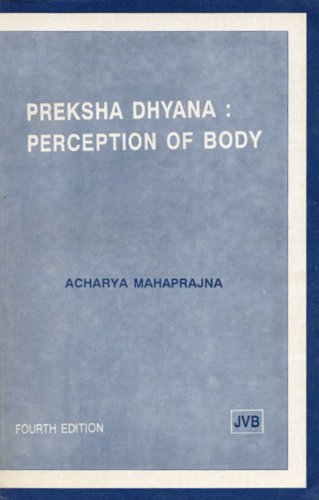The basic principle of Preksha Dhyana is—live fully and entirely in the present moment. To be keenly aware of the present state of the body, of the restlessness, sensations and vibrations in the body and the causes of these sensations, is perception of body. The structure of the body is extremely complex and not easily comprehensible. Cell, the living unit of the body, is so minute that it needs a high power microscope to be seen and a super electron microscope to peep inside its body. One has to have a long practice to become familiar with it Capacity of comprehension is never uniform and varies from sādhaka to sādhaka. A beginner can cognise only very gross phenomena On the other hand, sādhaka with long experience can perceive very minute sensations by intensifying his concentration and developing his perception, and there is no comparison between the two.
From Gross to Subtle
Perception of body is a process for enhancing self-awareness. This is a centripetal process i.e. we travel from outside to inside towards the centre. Starting from the outermost layer of consciousness, one has to penetrate more and more deeply, i.e, we go from gross to subtle. First, we perceive gross muscular movements. Then we become aware of the subtle vibration of the inner organs. Then we see the chemical reactions as well as the electromagnetic impulses which incessantly criss-cross our body, and finally we come face to face with the flow of the vital energy which energises them all Penetrating deeper still we perceive the subtle body and the subtlemost body - karma śarīra which produces the impelling forces within the body. Ultimately one realises one's own real self i.e. the spiritual self.
Profoundness of the BodyThe instructions for perception of body enjoin the practitioner to go deeper and still deeper inside the body. To a beginner this could be quite confusing. Human body has only a small depth. It is so small, slim and narrow that depth as such is not to be found easily. True, there is no physical depth; we cannot realise the body's depth with our eyesight. It is only when we perceive layer after layer of the consciousness, that we have been able to enter the subtle world of living tissue and cells. We realize the sheer profoundness of the body which is unique and incomparable. The practitioner has to try hard to reach the subtle world.
Sequence of PerceptionThe successive stage of perception would be:
- awareness of the superficial sensations of the skin such as contact with cloth, warmth, perspiration, itchiness etc.,
- awareness of the sensations produced by the muscular movements,
- perception and awareness of the sensation produced by the functioning of the internal organs such as heart, liver etc., and finally,
- awareness of subtle vibrations produced by the electrical impulses travelling within the nervous system and the flow of vital energy in the whole body.
Thus commencing with the outermost layers of the skin, the practitioner of śarīra prekṣā concentrates his attention on each and every organ of the body - from head to feet and feet to head - in turn penetrates deeper and deeper, and develops a high degree of self-awareness by impartial perception of gross and subtle sensations.
Pure PerceptionTo perceive is different from seeing with one's eyes. Perception, when it is bereft of thought, word, imagination, memory, conception and dream, is perception—perception and nothing but perception, uncontaminated pure perception.
What is pleasure? What is pain, misery or suffering? One has to get the deeper meaning of these common terms. Both are perceptual awareness of different classes of sensations. One has to grasp the remarkable distinction between perception and sensation. While sensation signals are the unprocessed inputs of awareness, perception is the finished product processed by the brain. The processing will depend upon the mood, expectations and many other complicated variations. In the case of pain, for example, sensation-signals of the same intensity (say from a toothache) affect each person differently. Each person's suffering is his perception and this varies immensely from person to person. It is, therefore, possible to reduce the element of suffering (or that of pleasure) from each perception or even to make it devoid of either emotion. In Śarīra prekṣā one practises to achieve pure perception.
Perception of body is an exercise for para-perception-perception that is bereft of emotions of likes or dislikes when there is no attachment or aversion. It is the total awareness of the self—one's conscious self. Normally one's perception is coupled with likes or dislikes, i.e., either it is pleasant or unpleasant, either one enjoys or suffers. It is difficult to visualize without emotion. But unless one learns to transcend the duality of likes and dislikes, one cannot reach higher levels of consciousness. Perception of body initiates transcendental outlook.
Awareness of the Present MomentOne of the basic features of perception of body is the awareness of the present moment It shows one the way to be keenly aware of what constitutes the present moment In other words: what is the present state of the body? What chemical reactions are taking place? What is being synthesized? What is being torn apart? What bio-chemical changes are taking place? What is the rate of the heartbeat? How are the electric impulses conducted along the nerve-paths? To become aware of all these metabolic and other processes is to perceive the present moment. The practice of perception of body is strictly a reality of the present - neither memory from the past nor planning for the future It encourages the practitioner to live in the present moment alone.
 Acharya Mahaprajna
Acharya Mahaprajna

